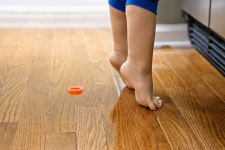This Little Piggy Went to Market…This Little Piggy Had Flat Feet?! (Part 2)
Let’s start with toe walking. Toe walking (which is when children walk on their tip-toes) is incredibly common in children who are learning to walk – particularly in the 2nd year of life. By the time kids turn three the tendency to toe walk fades; however, it does persist in some children. Now, it should be noted that the occasional toe-walking isn’t cause for concern. But, for kids who do it all the time – and especially for those who continue to toe-walk after turning 3 – a visit to the doctor is in order.










